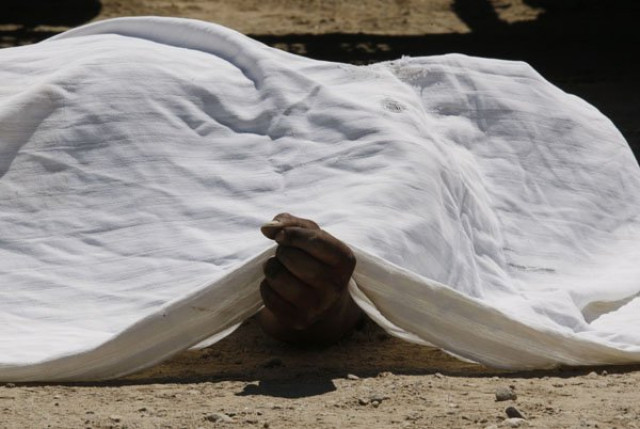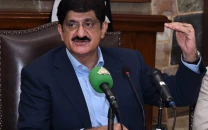Keamari victim’s family to challenge medical report
Sindh govt to announce compensation for those affected by gas leak on Monday, says Wahab

PHOTO: REUTERS
At least fourteen people were killed in what was initially thought to be a gas leak in the area neighbouring the port, beginning last Sunday, while hundreds of people were rushed to hospitals with respiratory distress. It was later claimed that the incident was likely a result of soybean dust.
A report issued by the Director Laboratories and Chemical Examiner (DLCE) to the Sindh Health Department late on Friday evening stated that no traces of suspicious chemicals or gases were found in the blood or lungs of the victims.
The report, a copy of which is available with The Express Tribune, also states that morphine was detected in the viscera of an unknown deceased - Gul. Implying that he was a suspected drug addict, the report adds that he probably died due to exposure to soybean dust.
Keamari deaths: Soybean dust theory a ‘cover-up’
Gul, a daily wage worker, was the only person killed in the incident whose body was taken for autopsy. At the time of the post-mortem, he had not been identified and his family had not been informed. While the body of another victim, Imran, was also taken for testing, doctors only drew blood samples from it due to the presence of family members.
Imran’s blood sample was tested for seven poisonous substances, namely ammonia, carbon monoxide, phosphine, hydrogen sulphide, metals, insecticides and corrosives. In Gul’s case, the samples were also tested for opium and its derivatives.
According to a medical expert, such chemical examination tests usually encompass at least 17 groups of toxic substances to ascertain the cause of death.
Speaking to The Express Tribune, police surgeon Dr Qarar Abbasi said that his teams had sent samples from 15 other patients for chemical examination, apart from those of Imran and Gul. However, he added, the results of the tests had not yet been shared with him.
“Gul was not a drug addict,” insisted his relative Ali Sher. “He was a poor man who died because of the poisonous gas. Were all those who died in Keamari drug addicts?”
Speaking to The Express Tribune, Sher, who is the Drag Mehar union council chairperson in Kingri taluka of Khairpur district, maintained that the government should determine the actual reasons for Gul’s death. “He was a poor man, he was a labourer trying to earn money to support his children,” he repeated.
Riaz Ujjan, another relative, said that the family had not been informed about the report. “How can a worker afford such drugs? He had to feed seven children and a wife,” he said, asserting that the report was ‘manipulated.’
DLCE head Dr Shahid Mustafa Memon, Sindh health minister Dr Azra Fazl Pechuho and Sindh health secretary Zahid Abbasi were unavailable for comment.
Under investigation
Murtaza Wahab, the Sindh chief minister’s adviser on law, environment, climate change and coastal development, said that based on the report he had received, the incident had occurred due to soybean dust.
“But we are still open to accepting reports that say otherwise,” he clarified. “We are not covering anything up.”
Keamari’s gas leak leaves ‘unknown body’s’ family in the dark
According to Wahab, the Sindh Environmental Protection Agency’s technical team had conducted a multi-pronged environmental survey of the affected locality and had also summoned different companies located in the area.
“Our report is under investigation and we will share details once it is finalised,” he added.
Compensating the deceased
Wahab further said that he was aware of the misery of the families who lost their loved ones. “We will request the CM to announce compensation for the families,” he promised, adding that it would be announced on Monday.
Explaining the delay in this regard, he said that the administration had been busy in tasks dealing with the identification of the problem and rehabilitation of the people. “The other reason was that we did not identify this lapse, but they are our own people. They will not be left alone.”
Published in The Express Tribune, February 23rd, 2020.



















COMMENTS
Comments are moderated and generally will be posted if they are on-topic and not abusive.
For more information, please see our Comments FAQ